I have published several articles about the infamous race at Sebring in 1965 where two Iso Grifo A3/C (Bizzarrini) race cars were destroyed. Other tragedy followed as described by C. Rino Argento who helped Giotto Bizzarrini manage that race. Another interesting article was sent to me by Gunther E. Hering who was part of the Bizzarrini pit crew that day.
As we get closer in time to the original event and hear from people who were there or in the case in this article below spoke with a key participant at the race and the man who put two crashed race cars together to create one car (Max Balchowsky) we get closer to the truth of what happened.
However, we still do not know where the reconstructed Iso/Bizzarrini race car is today. If you have information about this missing Iso race car send me an email – click here.
This article was originally published in the Griffon (the publication of the Iso & Bizzarrini Owner’s Club) in 1982.
Comments from knowledgable My Car Quest readers are at the end of this article and there is a photo of a woman trapped under one of the Iso A3/C crashed cars. Photos of the reconstructed Iso A3/C are also shown.
Mike Gulett, Editor
by Louis Van den Berg –
In the volume two, number one issue of Griffon, Winston Goodfellow, in his history of Iso, part three wrote:
In 1965 the Iso racing efforts started on a much lower note than 1964. At Sebring two Grifo A3Cs were fielded. The first car, #8, driven by Casoni and Nioser, started in 23rd position. However, when the car was braking for a turn in the second hour of the race, the brakes were lost because of improper brake fluid, which had boiled away in the grueling competition. The car used the escape road and was abruptly stopped by three girls driving in to see the race in their VW bus. Needless to say, extensive damage resulted.
The second car, #9, being driven by Rainville and Gammino, stared in the 47th place. With some good driving the car slowly worked its way up through the field.
The Grifo A3C (similar to Bizzarrini) had faired very well, climbing to 21st place in a race where the track temperature was 125°F. The incredible heat was quenched though by an equally incredible deluge which came on suddenly and dropped a tropical flood six inches deep in five minutes! The cars that were previously doing 150 mph slowed to 25 mph. Lap times of 3 minutes now dropped to over 10 minutes.
Phil Hill had to stop his Ford GT three times to open his door and let the water out, while in the pits, spare wheels were floating away! The remaining A3C, with Gammino behind the wheel, was doing as well as could be expected, when he misjudged, the track edge in the flood and hurled sideways into a support pole for a pedestrian bridge, slicing the car in half. Literally, two totally separate halves. Amazingly, Gammino walked away unhurt.
That was the story of what happened to Iso at Sebring, Florida in 1965, but what happened after that to that car is an interesting story in its own right that I heard recently from Max Balchowsky who oversaw the cars mechanically for that race. After the accident, Max examined the car and thought that it might be restorable. As can be seen from the accompanying photos (below), the damage was pretty severe. It was a ragged break. Most normal people would say that the car was, to put it charitably, a total loss, perhaps good for a few parts. But no-one who has met Max Balchowsky has ever accused him of being too normal.
Max is the kind of guy who does impossible things. He does them because nobody bothered to tell him that they couldn’t be done. I’ve seen several examples of this in my somewhat brief acquaintance with Max. Max needs parts–Max makes his own: brake calipers, headlight covers, mounts, rotors, windows, panels, cases, what-have-you. He is a master mechanic and craftsman who may be one of the few certified (and somewhat unsung) geniuses of post-war era US automotive history.
His incredible independent racing successes with his Ol’ Yeller racing car from the fifties, which he engineered and built himself. His involvement with Iso and Bizzarrini, his shop, Hollywood Motors, which recently closed after more than 30 years in operation and serviced more exotic iron than most people will ever dream of. His involvement with the motion picture industry, which involved work with Steve McQueen, Walt Disney and numerous other Hollywood personalities. And many other things–all have contributed to this man’s almost legendary status amongst those in the know.
This is not to say that Max is the most charming person in the world. He can be, but often seems bitter, suspicious and hostile. He has often asked me during the course of a conversation what my angle was. What ulterior motive did I have in talking to the guy? None. I just think he’s intriguing. I also think that he’s basically a very nice person whose been burned by people on a number of occasions–and he’s told me as much. This is an easy thing to have happen in Hollywood.
There will be more on this fascinating character in a future issue, but for now, let’s get on to this interesting little story. Max bundled the car up and then arranged to ship it by air from Sebring, Florida to Los Angeles, California, so that he could work on it at his shop in Hollywood. The bad luck that had torn the car in half in the first place seemed to still be in force. The car, which for cost reasons had been sent “deferred rate,” accidentally went to New York instead of Los Angeles. Here, the car met with foul play and the FBI was called in to investigate. Someone had stolen two wheels and a dashboard.
Finally, the car arrived at Max’s shop and three people set to work on it–Max, his wife and Chuck Porter, who is another one of those automotive miracle workers. They started working in May 1965 and two weeks later had reconnected the two halves, repaired the damaged bodywork and had the car running. According to Max, the car looked and ran well. He eventually sold the car to Ferrari entrepreneur Ed Niles for (gasp!) $2,800.
We don’t have a photo of the car after its completion, but Max says it’s still running around somewhere. Perhaps it’ll turn up and when it does, we’ll run a shot of it. The conclusion of the story isn’t all rosy, though. Max’s previously warm association with Giotto Bizzarrini turned chilly after Bizzarrini began to dispute the ownership of the car. Max thought that had been taken care of–had paid a sum and come to an agreement.
But something must have been garbled in the communication–Bizzarrini filed suit against Маx.
Eventually, everything was resolved, and, like the car itself, the friendship between these two men which had been torn apart was re-united.
~~~~
Previously Published Comments from My Car Quest Readers
A first hand account from My Car Quest reader Bill Montgomery who sent in this photo and wrote the description.
My friends and I were at the 1965 Sebring, coming over from Tampa. The picture was taken when car #9 was heading toward the snow fence. The accident happened so fast that before we realized it, the lady was trapped under the car. I believe we were naive to believe the fence was going to stop the car. I was in the white shirt helping to lift the car off of her. I never found out if the woman was seriously hurt but she was able to get out from under the car and sit up.
Comment by Ferdi
What an interesting story, I was there at Sebring back in 1965. I was positioned in the Alfa Romeo pits watching the race when the storm hit the track. The pit wall kept the water from draining properly and very quickly what looked like a canal was formed for the whole length of the pits. Next thing the Iso Grifo started to fish tail and hit the pedestrian bridge, just like in the picture the vehicle was cut in half right behind the driver, you could actually see the back of the seats with the driver still inside.
Comment from Fred Reitz
I was an eye witness in 1965 at Sebring when under a typical Florida STORM the Iso Grifo number 9 aquaplaned and hit the pedestrian bridge sideways and was cut in half right behind the driver’s seat. Lucky the driver walked away. The main straight was under a foot of water at the time.
The Information Below and and Photos Were Supplied by Mike Clarke – Who Owns The Engine
In 1965 Balchowski takes the cars back to his shop and starts the project of merging the two crashed cars into one but he does not finish the project and instead sells the car to Ferrari collector Ed Niles.
Ed Niles tries to fix the car, but the project is too complicated and he sells the car to Ralph Brouett.
Ralph Brouett was a paint and body man so he is able to finish the car. Brouett kept the car for a little over a year and then sold it.
It went to an unknown person who kept it for 6 months and it ended up at a car dealer in Los Angeles where Ralph Brouett saw it on the car lot and was upset because the dealer wanted $500 more than he had sold it for!
The car then disappeared and has not been seen since.
Let us know what you think in the Comments.
Below are photos after the Max Balchowsky reconstruction of the two crashed Iso A3/C race cars
In the photo above and below you can see that the front air intakes have been removed.
Below is Ralph Brouett’s classified advertisement from Road & Track magazine selling the Iso A3/C race car – date unknown. I love the description – “a man’s car”.

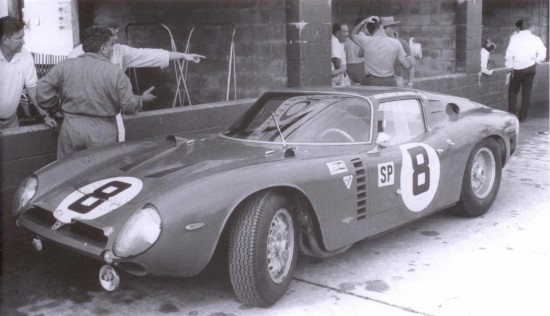
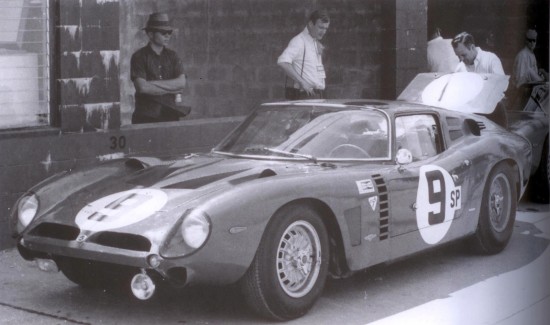
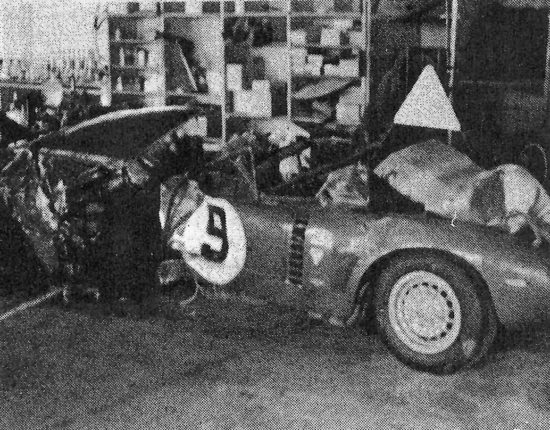

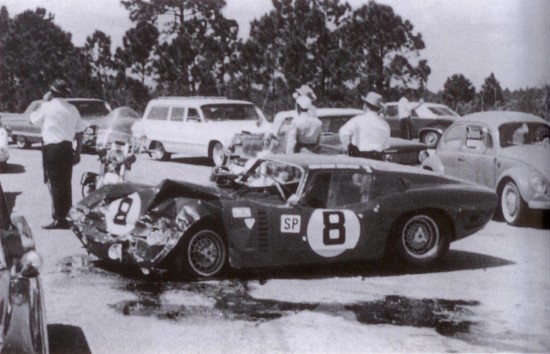
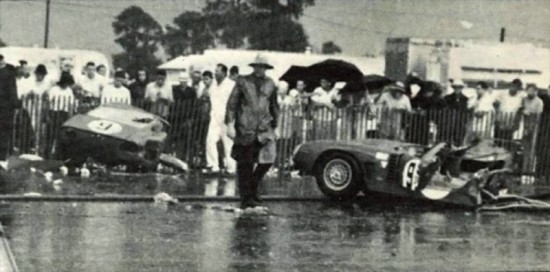
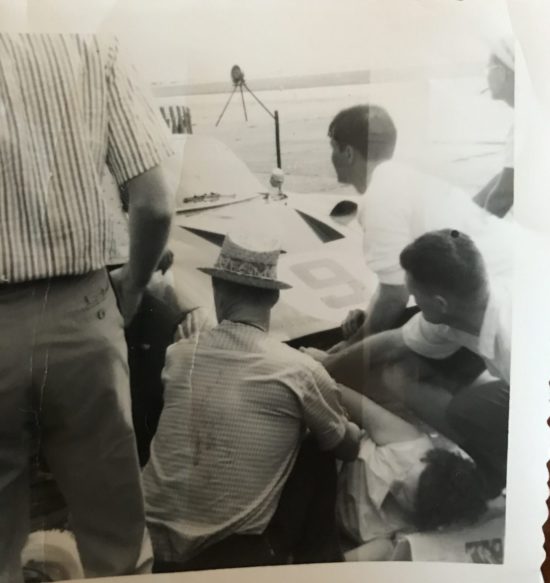
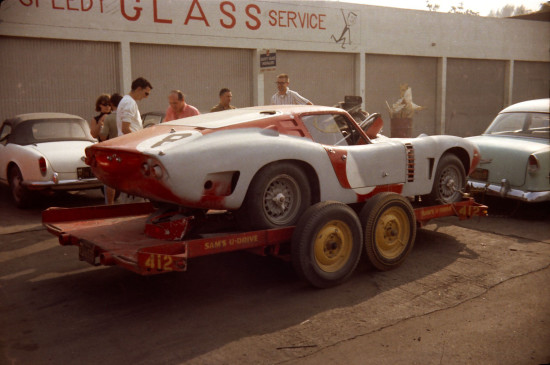
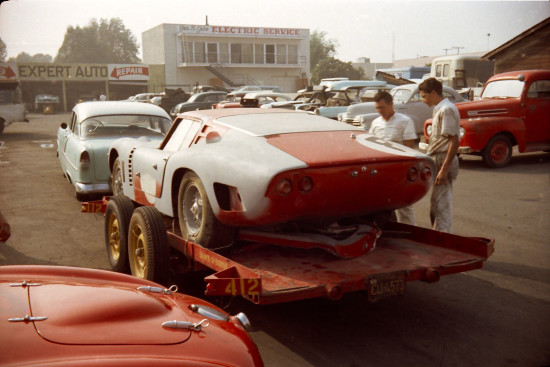
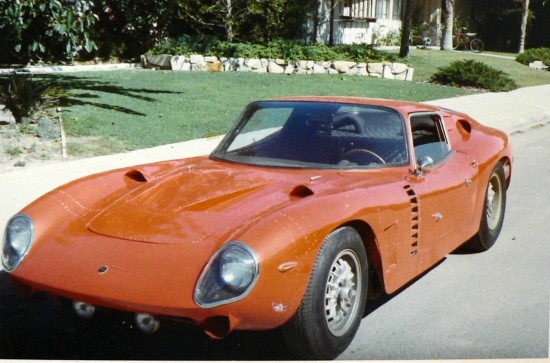
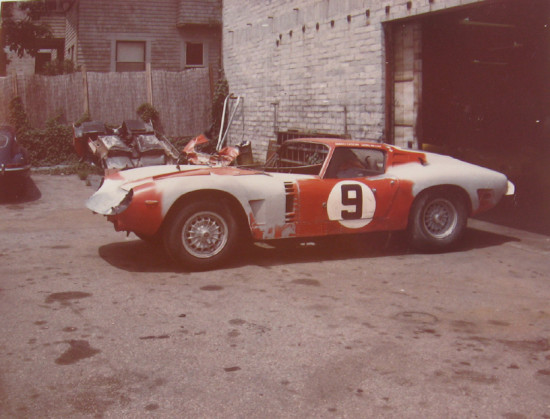
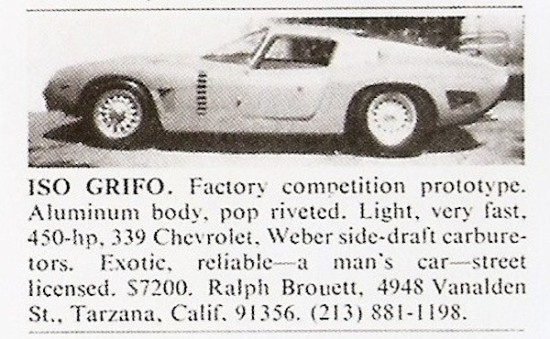
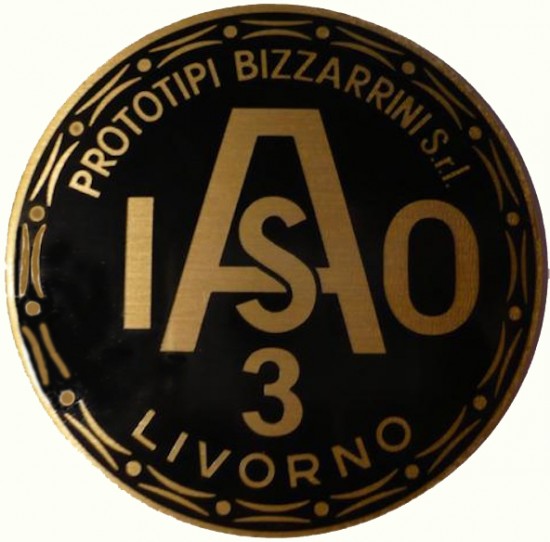
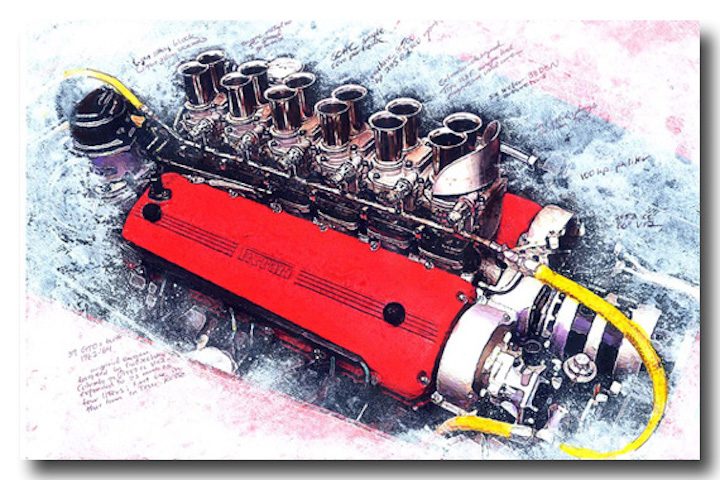

While ordinarily I would hesitate to consider a car made of two pieces (I’m not clear if it was two halves of the same car or the front half of one and rear half of another ) I would be fearful it would not track straight. But if anybody could do it, it would have been Max. Now my question is, do you think the car lives with the split air intake, which seems to be missing from the reconstructed car? Also as to why Max would have that ability, he worked on film sets, tending to the cars and/or stunt cars. For the cars the leading actors drove, any prudent film company usually has a look-alike in case the car breaks. It cost umpteen thousand to stop filming and repair the car, so they have a “stand in” ready and no doubt in his film career he had been forced to wheel in the stand- in after the lead car faltered. In Bullitt, they had three look alike green Mustangs, and you can see McQueen hitting the camera in one scene.
As far as starting down that (very) cold trail, i did what any car finder would do–ran an ad in Craigslist…
The ad. I’ll let readers know if I get any responses. This was the way i used to find cars whenIi was a barn finder, only then it w the Auto Trader.
aaahhh! The sixties and 3 girls in a Volkswagen bus… Nice story about Sebring, too, Mike!
No response to the ad looking for the car. So I lowered the offer to $1500, operating on t he theory if the owner doesn’t know what it is, then they won’t know what the value is either. It’s just Uncle Jake’s beat up sports car. Maybe I should take the name out, just say “car that looks like this.”